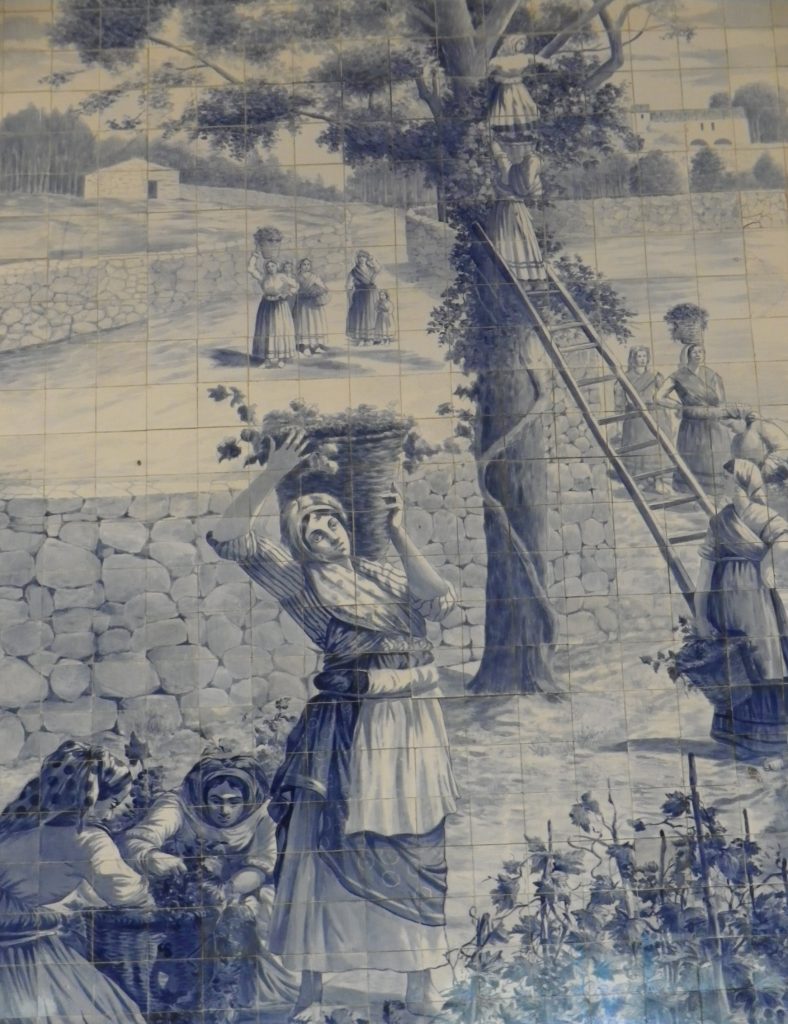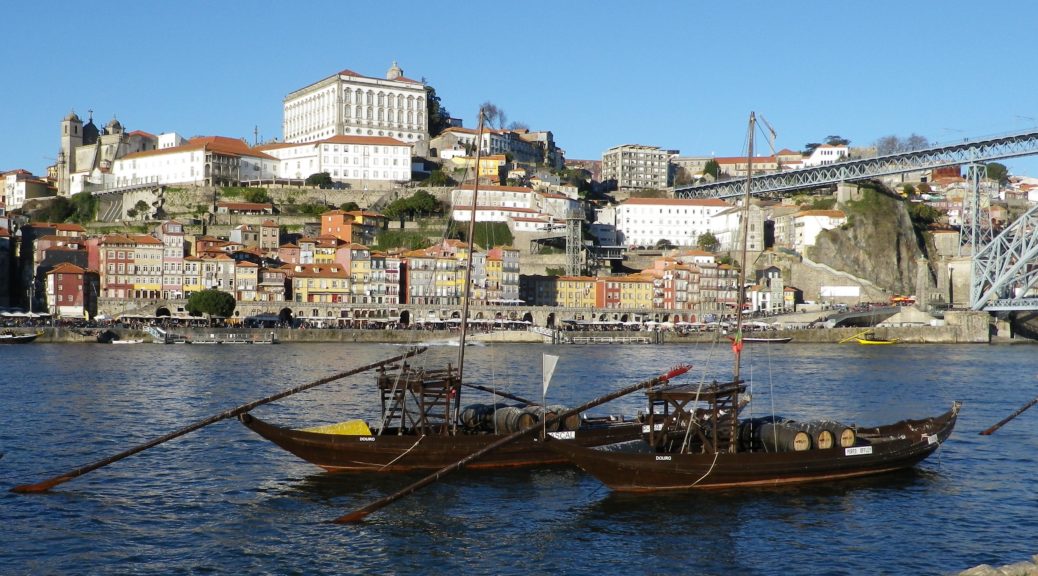Deviating from my normal routine of hiking in the countryside, I recently completed a wine-themed walk in Porto called the Urban Wine Route (Rota Urbana do Vinho, in Portuguese). But this route has a big caveat! Formerly developed by city authorities, the tourist offices no longer have it listed as an itinerary to complete! My confusion deepened when I found a map of it though, among tourism brochures in the Museum of Port. That brochure, along with my online research, gave me enough information to follow it, so I did.
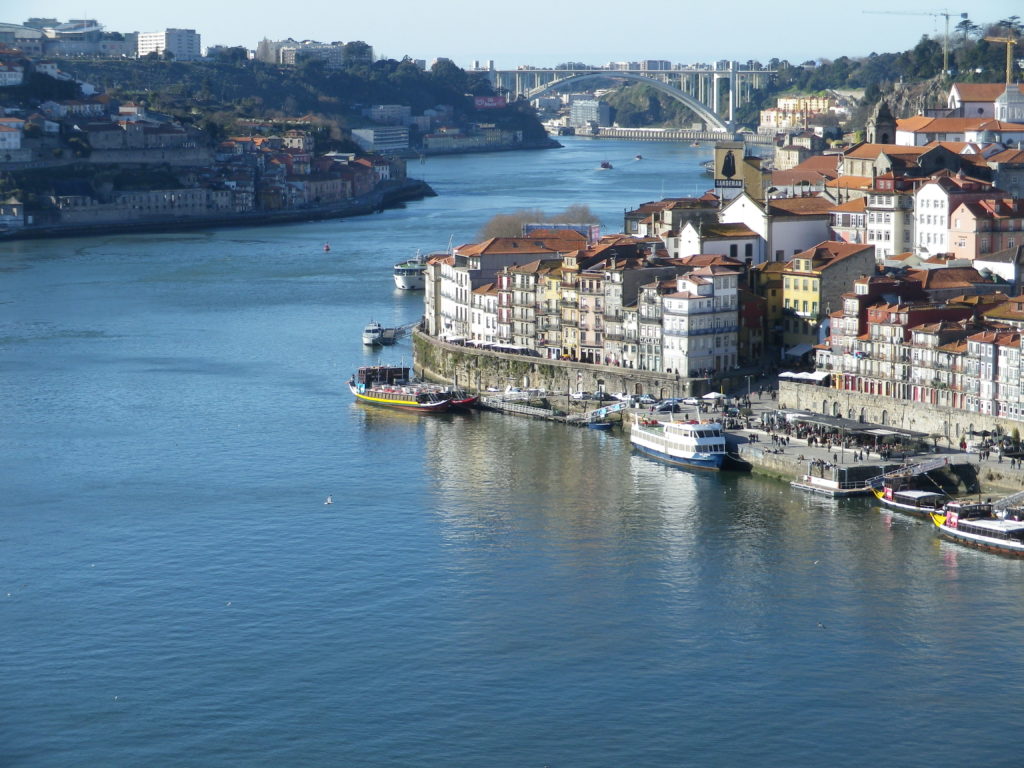
The itinerary focuses on the impact Port wine and wine trade had on Porto: The institutions, the architecture and the net results of the port wine trade on the city’s urban development. Thus, it offered a fascinating insight into the development of a regional economy based on one product: Port wine.
The route meanders about 5 kilometers in total, mostly through the old city. It goes uphill (and Porto has a lot of hills), to the Municipality Hall. Then it generally proceeds as far upriver as the city wall (the D. Fernando Wall), and as far downriver as the Museum of Port. Primarily dedicated to the lives of those who helped create Port wine as it is today, the museum displays focus on the lives of the shippers, the factory owners and the rivermen, whose once arduous and perilous days-long journey down the river from the vineyards along the upper Douro was documented in a short video.
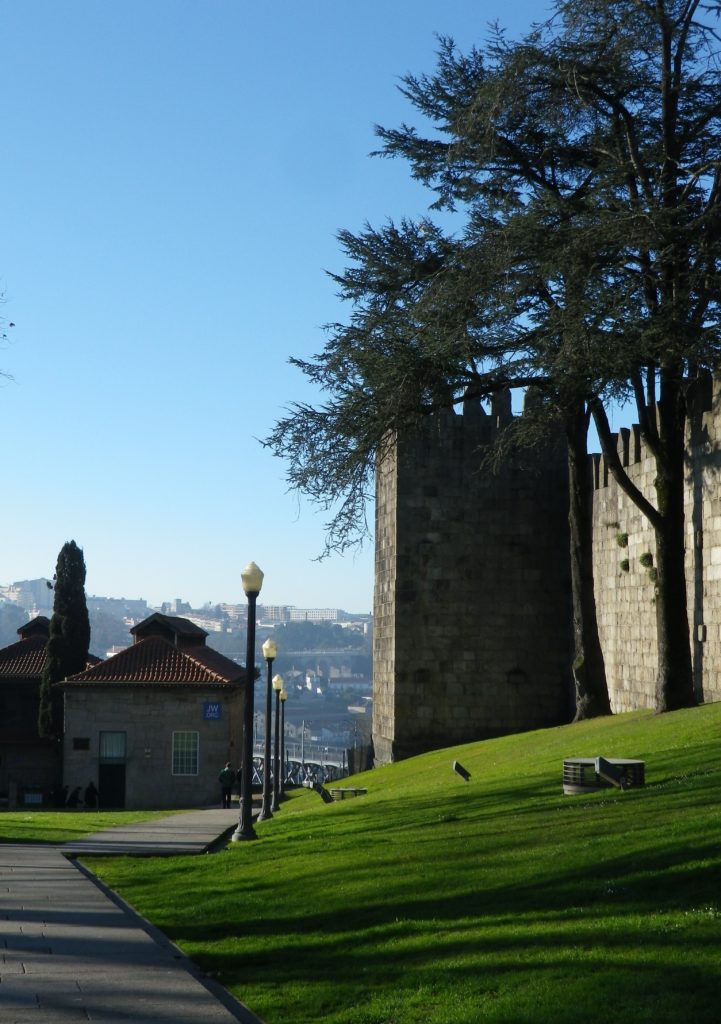
While vineyards had long existed along the Douro, English interest in a source of non-French, hearty red wine lead to the development of Port. English shippers arrived and refined the wine into what is now Port. Over time, they established “lodges” (warehousing cellars) whose English-sounding names can still be seen today across the river: Graham’s, Sandeman, Offley, Taylor’s. Reaching them by way of the upper level of the Ponte Luis I, affords magnificent views upriver, downriver, and a birds-eye look on the old city of Porto. Once on the other side, many of these lodges offer tours and tastings for a modest fee. (Inexplicably, the Urban Route of Wine did not visit this neighboring part of greater Porto, technically known as Vila Nova de Gaia. It is easy enough to add to this walking route though.)
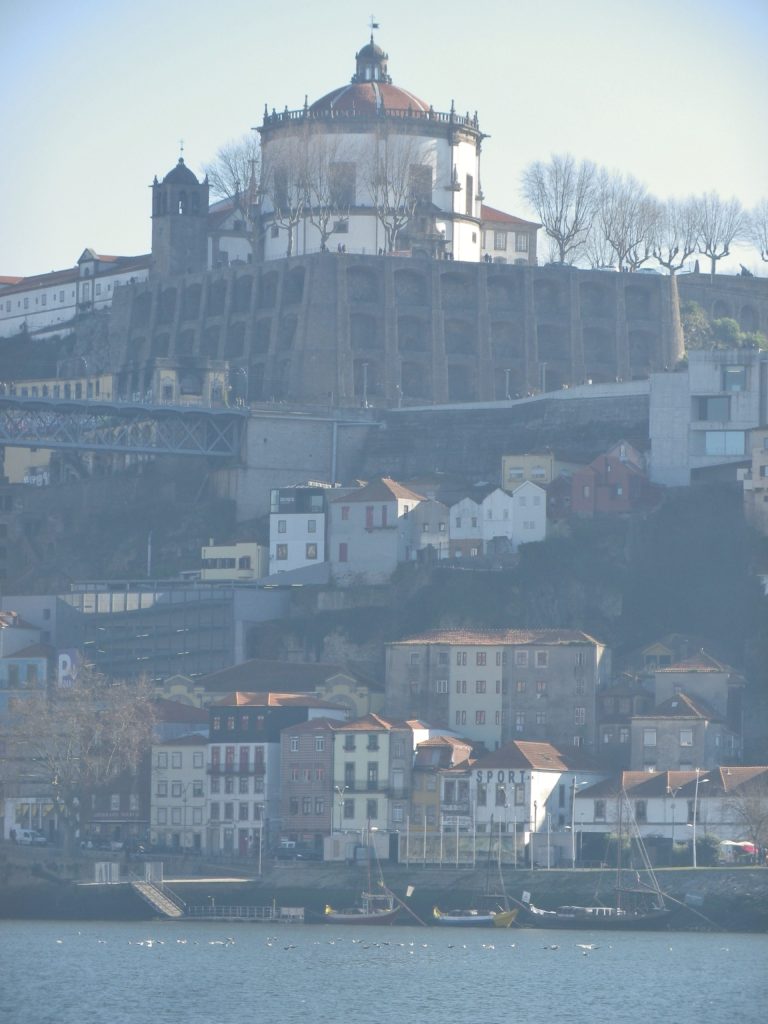
However, the route did pass along the Da Estiva quay, from where you can see the lodges on the other side. Nearby was the English Factory, so called because it was designed as a meeting place for the English port wine shippers. A massive, neo-classical style building, the businessmen of the English factories still meet there weekly for discussions over port wine and lunch.
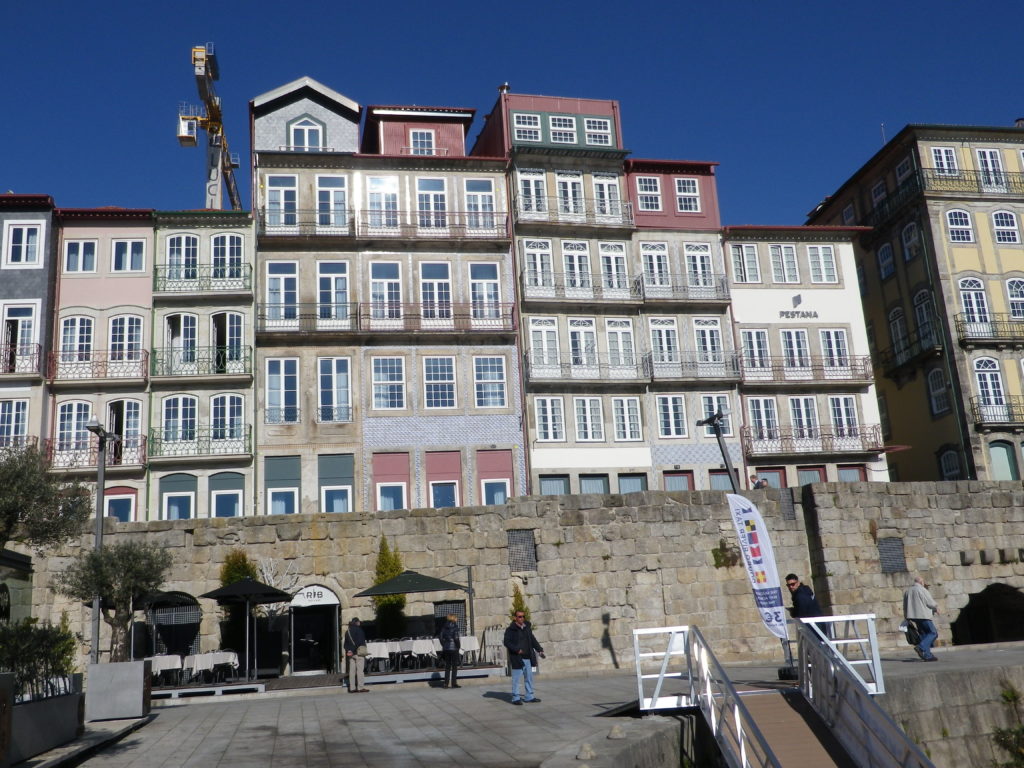
The Portuguese equivalent could be the Douro and Port Wines Institute, about two blocks away. Its mission is to protect and promote the Port and Douro wine appellations. Their work has contributed to the reputation for quality that Port wine has. It has the added appeal of offering tours and tastings, as well as a shop.
The most dramatic point on the route was the Stock Exchange Palace (Palacio da Bolsa), right next door to the Institute. It should not to be missed. Begun in the mid-1800s, it is apparent through such rooms as the Arabian Room, the main staircase and the meeting room, that no expense was spared in its creation. Port wine generated much of the leading families’ wealth, as well as generated much of the city’s tax revenue, so wine themes are found throughout the building. The key here is paying attention to detail, as there is a lot of it!
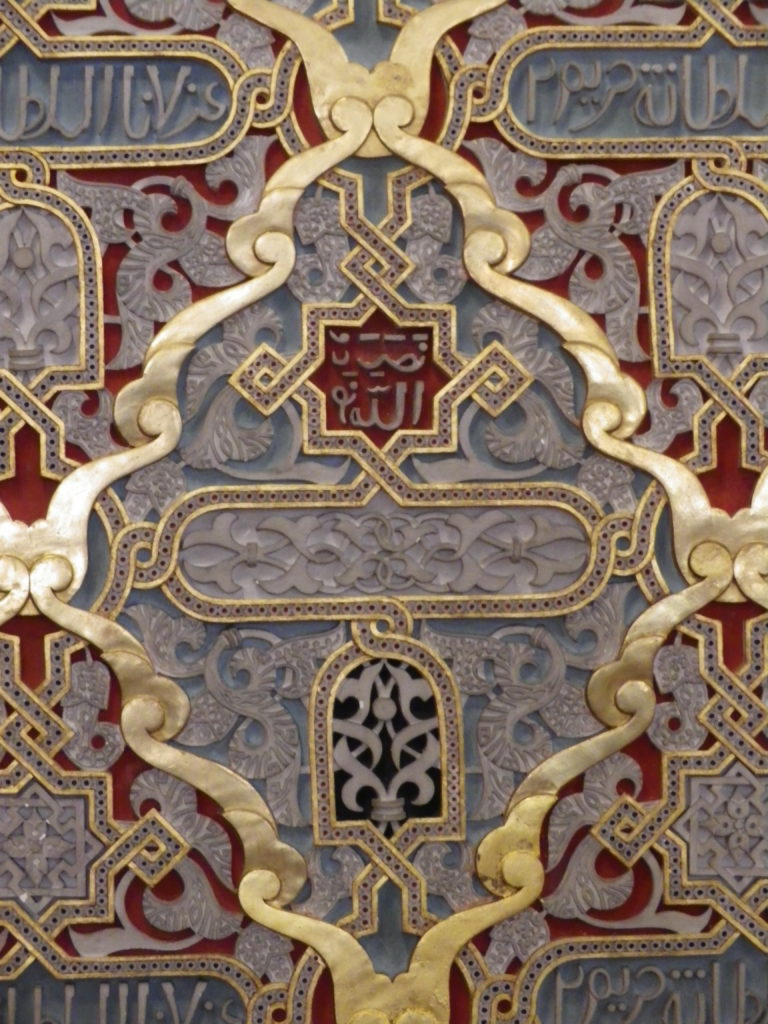
The route traversed many specific streets and squares that taxes on wine helped to create or improve. These were the Largo da Igreja de Santo Ildefonso, the Largo de Sao Domingos, the Mounzinho da Silveira, and the Rua do Almada, (once a Roman road). Overall, the most impressive aspect of these thoroughfares was the flamboyant architecture lining them. From Gothic to Renaissance to Baroque to a fair amount of Art Nouveau, the eye never lacked for beauty to find. Perhaps that is why I saw so many local young people out with cameras, seriously framing shots with an intensity, and patience, that cannot be found, sadly, in my shots.
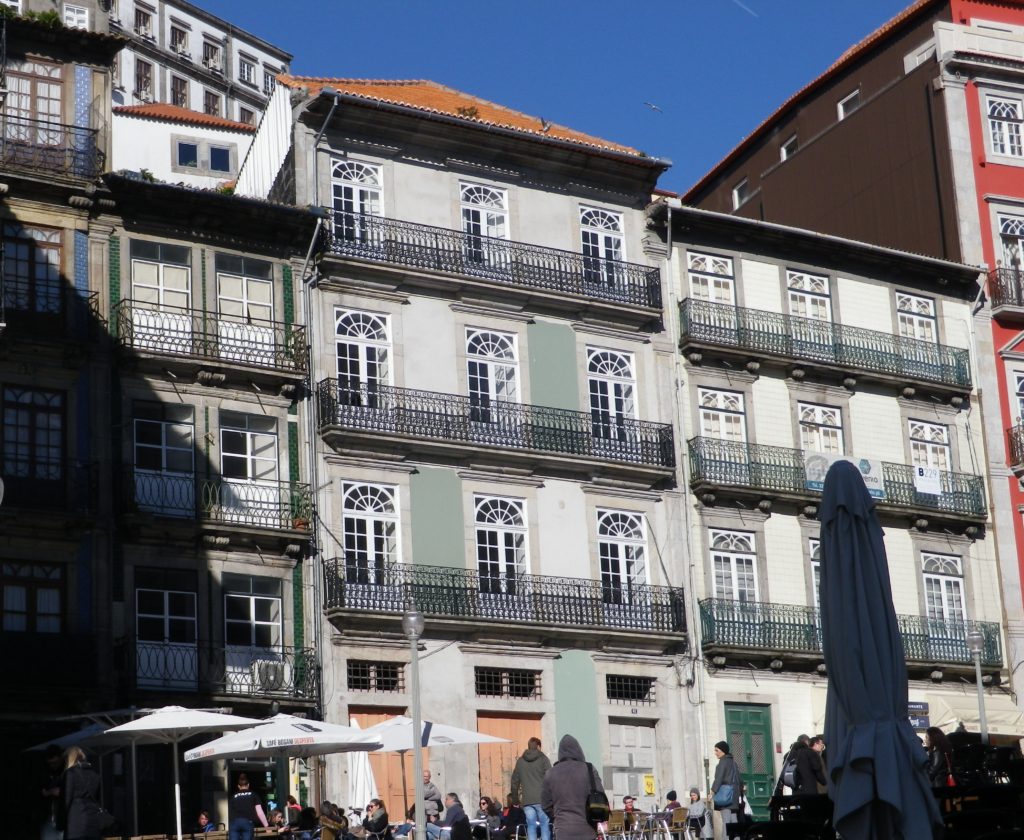
The history, art and architecture on this route were astounding. I have seldom beheld such a variety of styles in so comparatively small an area. Many of the buildings were covered in ornate patterns, or even pictures, made of azulejos, the blue glazed ceramic tiles found in many places in Portugal. The route also managed to cover some of the most city’s most beloved spots, beyond the tourists on the dynamic riverfront, which defines the city as much as Port wine itself!
